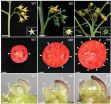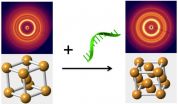(Press-News.org) Patients aged 80 and above are significantly less likely to be investigated or aggressively treated after surgery than their younger counterparts, reveals a national audit of hospital deaths, published in the online journal BMJ Open.
This is despite the fact that the oldest old have higher rates of trauma and multiple underlying conditions on admission, say the Australian researchers.
Care in the oldest old may be less aggressive, or scaled down because the outcome is expected to be poor or treatment considered futile, they say. Perceived future quality of life issues may also be a factor.
The researchers assessed data from a national audit of deaths after surgical procedures in every specialty carried out between 2009 and 2012 in 111 public and 61 private hospitals across Australia. This included one in five private hospitals and virtually all public teaching hospitals (99%).
In all, nearly 20,000 surgical patients died in hospital. Around half of these deaths were excluded because of data issues or because they occurred in people classified as brain deaths, or in those younger than 17 or in those who had had no surgery.
Some 11,201 were included in the final analysis. This group was divided into three age bands: 17-64; 65-79; and those aged 80 and above.
The researchers looked at the relationship between age, preoperative factors, such as multiple underlying conditions or trauma, and eight indicators of postoperative care.
These indicators were: fluid balance problems; return to theatre; unplanned intensive care unit admission; treatment in an intensive care unit; clinical issues; postoperative complications; the presence of infection at death; and whether, with hindsight, the surgeon would have managed the patient differently.
The average age of those who died soon after a surgical procedure was 78, and just under 44% (4892) were aged 80 and above. Of those who died in hospital, most had been admitted as emergencies (83.4%). Nearly half (45%) had an incapacitating and life threatening disease on admission.
The oldest old had higher rates of admission as a result of trauma or other emergency than either of the two other age groups. But they were treated differently, receiving lower levels of aggressive and expensive treatment.
They had around half the rate of unplanned returns to theatre (11.2%) of those aged 65-79 (20.2%). They were also less likely to have unplanned admissions to intensive care (16.3% vs 24%) and less likely to be treated in intensive care (59.7% vs 76.7%).
On average, the most elderly spent fewer days in hospital than those aged between 65 and 79 (9 vs 11 days) but more than the youngest (8 days). And they were less likely to have postoperative complications diagnosed and reported than 65-79 year olds.
Those aged between 65 and 79 also had a higher prevalence of cancer, which may have explained their higher rates of admission to intensive care, a move "that is often rationalised due to high operational costs whatever the age group," they write.
Surgical care for older patients tends to be complex, because of functional, physiological, psychological, and social factors, which are likely to influence decisions about their hospital care, say the researchers.
None the less, they point out that the oldest old had the lowest rate of diagnosed postoperative complications of all the age groups, despite virtually all of them having multiple underlying conditions, which are usually associated with a higher risk of problems arising after surgery.
"Our data suggest that there may be a culture of less intensive investigation, monitoring and possible failure to intervene in the elderly group," they say, adding that the costs of surgery may rise more slowly than expected if older people continue to be given less aggressive postoperative care.
INFORMATION:
1. Appropriate duration of dual antiplatelet therapy still unclear
Free abstract: http://www.annals.org/article.aspx?doi=10.7326/M15-0083
URL goes live when embargo lifts
A systematic review of published evidence does little to clarify the appropriate duration of dual antiplatelet therapy (DAPT) following drug eluting stent placement. The evidence suggests that longer duration therapy decreases the risk for myocardial infarction, but increases the risk for major bleeding events, and may provide a slight increase in mortality. The results are published in Annals of Internal ...
Ovarian cancer is notoriously difficult to diagnose and treat, making it an especially fatal disease. Researchers at University of California, San Diego School of Medicine and Moores Cancer Center have now identified six mRNA isoforms (bits of genetic material) produced by ovarian cancer cells but not normal cells, opening up the possibility that they could be used to diagnose early-stage ovarian cancer. What's more, several of the mRNA isoforms code for unique proteins that could be targeted with new therapeutics. The study is published the week of May 25 by the Proceedings ...
Frailer older patients are at higher risk of readmission to hospital or death within 30 days after discharge from a general internal medicine ward, but health care professionals can assess who is at risk using the Clinical Frailty Scale, according to a study in CMAJ (Canadian Medical Association Journal)
Readmission within 30 days after hospital discharge is common and also costly for the health care system. Identifying at-risk patients and addressing the factors contributing to readmission can help reduce recurrences. However, current tools are not able to predict accurately ...
This news release is available in French. Scientists measuring brain activity have found that in many regions, such as the sensory or motor cortex, activity sometimes oscillates at different frequencies, forming wave-like patterns. Despite the fact that such oscillations are frequently observed, and present in many brain regions, their functional role remains unclear. Research done by Dr. Christopher Pack, from McGill University, who looked at such waves occurring in a region of the visual cortex of the brain, suggests these oscillations could have a role in resetting ...
Cold Spring Harbor, NY -- A team of scientists at Cold Spring Harbor Laboratory (CSHL) has identified a set of genes that control stem cell production in tomato. Mutations in these genes explain the origin of mammoth beefsteak tomatoes. More important, the research suggests how breeders can fine-tune fruit size in potentially any fruit-bearing crop. The research appears online today in Nature Genetics.
In its original, wild form the tomato plant produces tiny, berry-sized fruits. Yet among the first tomatoes brought to Europe from Mexico by conquistador Hernan Cortez in ...
UPTON, NY -- Scientists at the U.S. Department of Energy's Brookhaven National Laboratory have just taken a big step toward the goal of engineering dynamic nanomaterials whose structure and associated properties can be switched on demand. In a paper appearing in Nature Materials, they describe a way to selectively rearrange the nanoparticles in three-dimensional arrays to produce different configurations, or phases, from the same nano-components.
"One of the goals in nanoparticle self-assembly has been to create structures by design," said Oleg Gang, who led the work ...
New research conducted in a rural community in Pakistan highlights the crucial role that essential fatty acids play in human brain growth and function.
A team co-led by the University of Exeter, working with experts in Singapore, has published findings in Nature Genetics which show that mutations in the protein Mfsd2a cause impaired brain development in humans. Mfsd2a is the transporter in the brain for a special type of fat called lysophosphatidylcholines (LPCs) -- which are composed of essential fatty acids like omega-3. This shows the crucial role of these fats in ...
Having a healthy gut may well depend on maintaining a complex signaling dance between immune cells and the stem cells that line the intestine. Scientists at the Buck Institute are now reporting significant new insight into how these complex interactions control intestinal regeneration after a bacterial infection. It's a dance that ensures repair after a challenge, but that also goes awry in aging fruit flies -- the work thus offers important new clues into the potential causes of age-related human maladies, such as irritable bowel syndrome, leaky gut and colorectal cancer.
"We've ...
May 26, 2015, Shenzhen, China - Researchers from BGI reported the most complete haploid-resolved diploid genome (HDG) sequence based on de novo assembly with NGS technology and the pipeline developed lays the foundation for de novo assembly of genomes with high levels of heterozygosity. The latest study was published online today in Nature Biotechnology.
The human genome is diploid, and knowledge of the variants on each chromosome is important for the interpretation of genomic information. In this study, researchers presented the assembly of a haplotype-resolved diploid ...
A gene essential to the production of pain-sensing neurons in humans has been identified by an international team of researchers co-led by the University of Cambridge. The discovery, reported today in the journal Nature Genetics, could have implications for the development of new methods of pain relief.
Pain perception is an evolutionarily-conserved warning mechanism that alerts us to dangers in the environment and to potential tissue damage. However, rare individuals - around one in a million people in the UK - are born unable to feel pain. These people accumulate numerous ...

